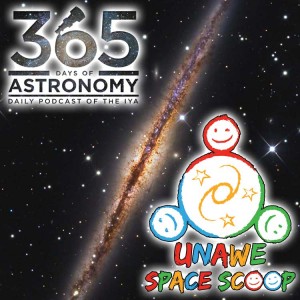Podcaster: Richard Drumm
 Title: Space Scoop: Astronomers Clear Up a Dusty Mystery
Title: Space Scoop: Astronomers Clear Up a Dusty Mystery
Organization: Astrosphere New Media
Link : astrosphere.org ; http://unawe.org/kids/unawe1427/
Description: Space scoop, news for children.
Bio: Richard Drumm is President of the Charlottesville Astronomical Society and President of 3D – Drumm Digital Design, a video production company with clients such as Kodak, Xerox and GlaxoSmithKline Pharmaceuticals. He was an observer with the UVa Parallax Program at McCormick Observatory in 1981 & 1982. He has found that his greatest passion in life is public outreach astronomy and he pursues it at every opportunity.
Today’s sponsor: This episode of “365 Days of Astronomy” is sponsored by — no one. We still need sponsors for many days in 2013, so please consider sponsoring a day or two. Just click on the “Donate” button on the lower left side of this webpage, or contact us at signup@365daysofastronomy.org.
Transcript:
This is 365 Days of Astronomy. Today we bring you a new episode in our Space Scoop series. This show is produced in collaboration with Universe Awareness, a program that strives to inspire every child with our wonderful cosmos.
Astronomers Clear Up a Dusty Mystery
13.8 billion years ago the most important event in history took place — the Universe exploded into life in the Big Bang.
In the first moments after the Big Bang, the Universe was extremely hot and foggy. Within a few millionths of a second, the Universe cooled, creating conditions that were just right for the building blocks of matter to form.
Almost 400,000 years later, helium and hydrogen were first created. These are still by far the most common materials in the Universe. Then 1.6 million years later, gravity began to pull stars and galaxies into existence from clouds of these gases.
Since then, all of the heavier materials in the Universe, such as carbon, oxygen and iron, have been produced in the hearts of stars and catapulted throughout the Universe when those stars come to the end of their lives. These are the materials from which we are all made.
What has been unclear until now, though, is how these raw materials could clump together into grains of cosmic dust without being destroyed by the harsh environments in which they are created. Well, we’re now one step closer to finding out!
ESO Astronomers using the “X_Shooter” spectrograph at the Very Large Telescope at Paranal Observatory in Chile have been studying a supernova called SN2010jl. And for the first time they’ve managed to measure these heavy materials clumping together to form cosmic dust grains, just a few short weeks after the violent explosion. Not only that, but these dust grains are the largest and strongest cosmic dust grains we’ve ever seen!
The team found that dust formation starts soon after the explosion and continues over a long time period. They found that dust grains larger than one thousandth of a millimetre in diameter formed rapidly in the dense material surrounding the star.
Although still tiny by human standards, this is large for a grain of cosmic dust and the surprisingly large size makes them resistant to destructive processes.
How dust grains could survive the violent and destructive environment found in the remnants of supernovae was one of the main open questions for the scientists, which this result has now answered — the grains are larger than expected.
Not only that, but the astronomers think they know where the new dust must have formed. It formed in material that the star ejected out into space before it exploded.
As the supernova’s shockwave expanded outwards, it created a cool, dense shell of gas — just the sort of environment where dust grains could seed and grow.
Results from the observations indicate that in a second stage — after several hundred days — an accelerated dust formation process occurs involving the ejected material from the supernova.
If the dust production in this supernova continues to follow the observed trend, by 2035 the total mass of dust will be about half a solar mass, or half the mass of our Sun; similar to the dust mass observed in other supernovae.
Here’s a Cool Fact
The soot from a candle is very similar to cosmic dust, although soot grains are 10 or more times bigger than those found in space! So you could say that planets are made from smoke!
Thank you for listening to 365 Days of Astronomy!
–––––––––––––––––––––––––––––––––––––––––
365 Days of Astronomy is a community podcast made possible thanks to the contributions of people like you. Please consider donating at 365DaysofAstronomy.org/Donate
End of podcast:
365 Days of Astronomy
=====================
The 365 Days of Astronomy Podcast is produced by Astrosphere New Media. Audio post-production by Richard Drumm. Bandwidth donated by libsyn.com and wizzard media. You may reproduce and distribute this audio for non-commercial purposes. Please consider supporting the podcast with a few dollars (or Euros!). Visit us on the web at 365DaysOfAstronomy.org or email us at info@365DaysOfAstronomy.org. In the new year the 365 Days of Astronomy project will be something different than before….Until then…goodbye


Trackbacks/Pingbacks